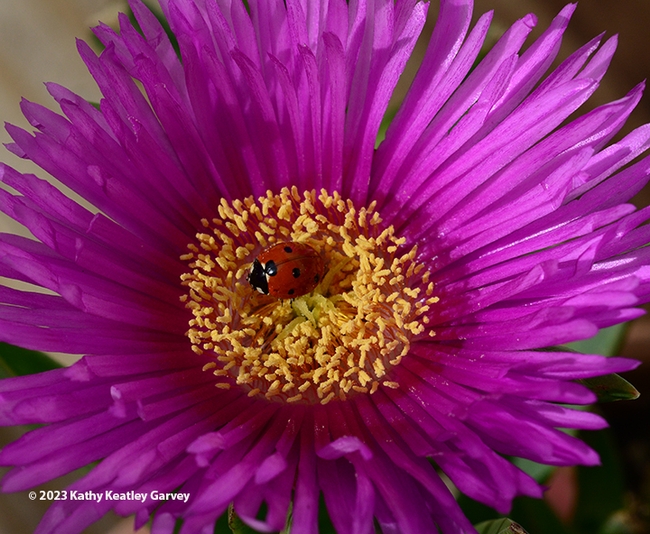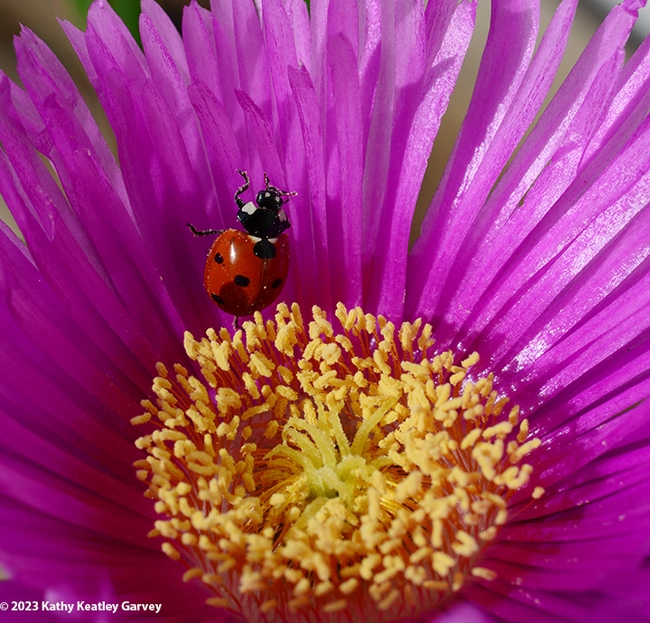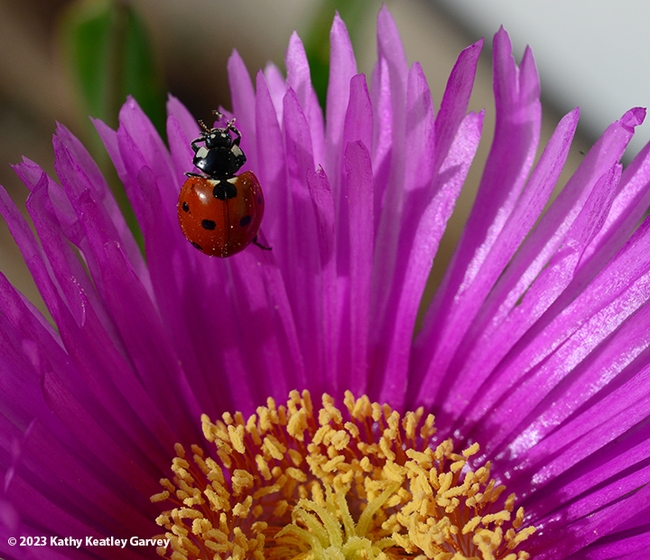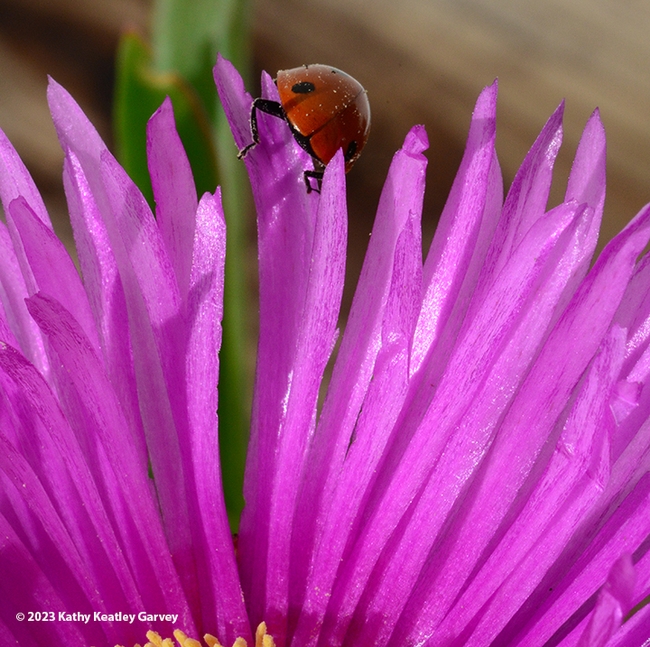It wouldn't make the news, even if it were a "Slow News Day."
"Lady in Red Climbs Neon-Pink Petals in Search of Aphids."
Lady beetles, aka ladybugs, are coming out of their winter hibernation now and they're hungry. Aphid-hungry.
We spotted this lady beetle Feb. 7 in a flower pot containing an iceplant, Carpobrotus edulis, native to South Africa. Iceplant is an invasive plant.
"Iceplant was introduced to California in the early 1900s as an erosion stabilization tool used on railroad tracks, and later used by Caltrans on roadsides," according to an article, "Invasive to Avoid--Iceplant," posted by the California Fish and Wildlife. "It has been used as an ornamental for many years, and is still sold in nurseries. Unfortunately, iceplant spreads easily, and has become invasive in coastal California from north of Humboldt County to as far south as Baja California. When it establishes in a location, it forms a large, thick mat that chokes out all other native plants and alters the soil composition of the environment. Because it is a coastal invader, it competes with many endangered, threatened, and rare plants." (See what Calflora.org says about it.)
California has about 200 species of lady beetles. Check out the lady beetles on the University of California Statewide Integrated Pest Management Program (UC IPM) to see many of the species. They are voracious consumers of aphids and other soft-bodied insects.
Meanwhile, a news flash: "Lady in Red Climbs Neon-Pink Petals..."
Attached Images:

A lady beetle nestled in an ice plant blossom. (Photo by Kathy Keatley Garvey)

Let's climb! A lady beetle begins her ascent--up an ice plant blossom. (Photo by Kathy Keatley Garvey)

How am I doing? Am I doing this right? Lady beetle stops. (Photo by Kathy Keatley Garvey)

I did it! I climbed my Mount Everest and I'm about to descend. (Photo by Kathy Keatley Garvey)